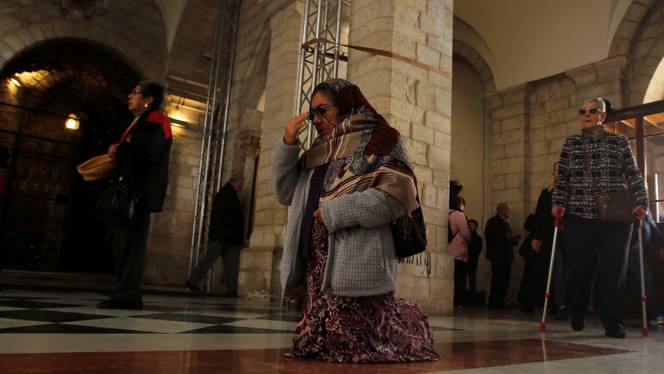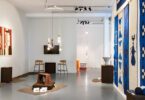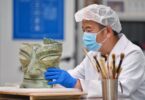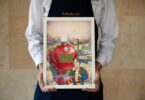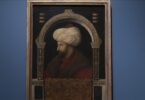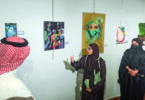An ancient Christian mosaic bearing an early reference to Jesus is at the centre of a controversy that has riled archaeologists.
Should the centuries-old, decorated floor, which is near what’s believed to be the site of the prophesied Armageddon, be uprooted and loaned to a US museum that has been criticised for past acquisition practices?
Israeli officials are considering just that. The proposed loan to the Museum of the Bible in Washington also underscores the deepening ties between Israel and evangelical Christians in the US, whom Israel has come to count on for political support, tourism dollars and other benefits.
The Megiddo Mosaic originates from what is thought to be the earliest Christian prayer hall worldwide, situated in a Roman-era village in northern Israel.
Unearthed in 2005 by Israeli archaeologists during a rescue excavation for an Israeli prison expansion, it holds historical significance.
Across a field strewn with cow dung and potsherds, the palm-crowned site of a Bronze and Iron Age city and ancient battles is where some Christians believe a conclusive battle between good and evil will transpire at the end of days: Armageddon.
The Israel Antiquities Authority (IAA) will make a decision regarding relocation after consulting with an advisory group in the upcoming weeks.
“There’s an entire process that academics and archaeologists are involved with,” said IAA director Eli Eskozido.
Moving the Megiddo Mosaic
The organisation said that moving the mosaic from its original location was the best way to protect it from upcoming construction at the prison.
Jeffrey Kloha, the Museum of the Bible’s chief curatorial officer, said a decision on the loan would be made solely by the IAA.
Numerous archaeologists and scholars strongly oppose the idea of relocating the Megiddo Mosaic from its original site, particularly displaying it at the Museum of the Bible.
Cavan Concannon, a religion professor at the University of Southern California, said the museum acts as a “right-wing Christian nationalist Bible machine” with links to “other institutions that promote white evangelical, Christian nationalism, Christian Zionist forms”.
“My worry is that this mosaic will lose its actual historical context and be given an ideological context that continues to help the museum tell its story,” he said.
Others balk at the thought of moving the mosaic at all before the academic study is complete.
“It is seriously premature to move that mosaic,” said Matthew Adams, director of the Centre for the Mediterranean World, a non-profit archaeological research institute, who is involved in digs at Tel Megiddo and the abutting Roman legionary camp of Legio.
Asked about criticisms of the Washington museum’s practices, Kloha said, “Major museums and distinguished institutions committed to preserving history have had to grapple with cultural heritage issues, particularly in recent years.”
“The museum initiated returns where appropriate to countries of origin without obligation to do so and encourages other institutions to do the same.”
By analysing other discoveries from the excavation and the letter style in the inscriptions, archaeologists from the IAA have dated the mosaic floor to the third century.
This predates the Roman Empire’s conversion to Christianity and the period of persecution against its followers.
Link to Evangelical Christians
Since its establishment in 2017, the Museum of the Bible has faced criticism for its acquisition methods and for advancing an evangelical Christian political stance.
In 2018, it was obliged to repatriate a looted ancient Mesopotamian tablet from Iraq and acknowledge the presence of modern forgeries among its Dead Sea Scroll fragments.
Furthermore, American authorities confiscated numerous pilfered clay tablets and antiquities from the museum’s founder, Steve Green, who is the president of Hobby Lobby and an evangelical Christian, and these items were returned to Iraq.
Evangelical Christians, whose ranks have been growing worldwide, have become some of Israel’s most fervent supporters, donating large sums of money and visiting the country as tourists and pilgrims. In the US, they also lobby politicians in Congress in support of Israel.
Evangelicals, who make up more than a third of the world’s estimated 2 billion Christians, say their affinity for Israel stems from Christianity’s Jewish roots.
The potential loan of the mosaic would strengthen the connection between Israel and the museum.
The museum is involved in sponsoring two archaeological excavations in Israel and maintains a gallery in collaboration with the IAA.
“Once you take any artefact outside of its archaeological context, it loses something, it loses a sense of the space and the environment in which it was first excavated,” said Candida Moss, a theology professor at the University of Birmingham who co-wrote a book about the Museum of the Bible.
Rafi Greenberg, a professor of archaeology at Tel Aviv University, said the proposal smacked of colonialism, where historically dominant powers have extracted archaeological discoveries from colonies.
“Even if Israel doesn’t ever recognise itself as being a colony, it is actually behaving like one, which I find odd,” he said.
Greenberg said that archaeological finds “should stay where they are and not be uprooted and taken abroad to a different country and basically appropriated by a foreign power.”
Courtesy: TRTWorld

